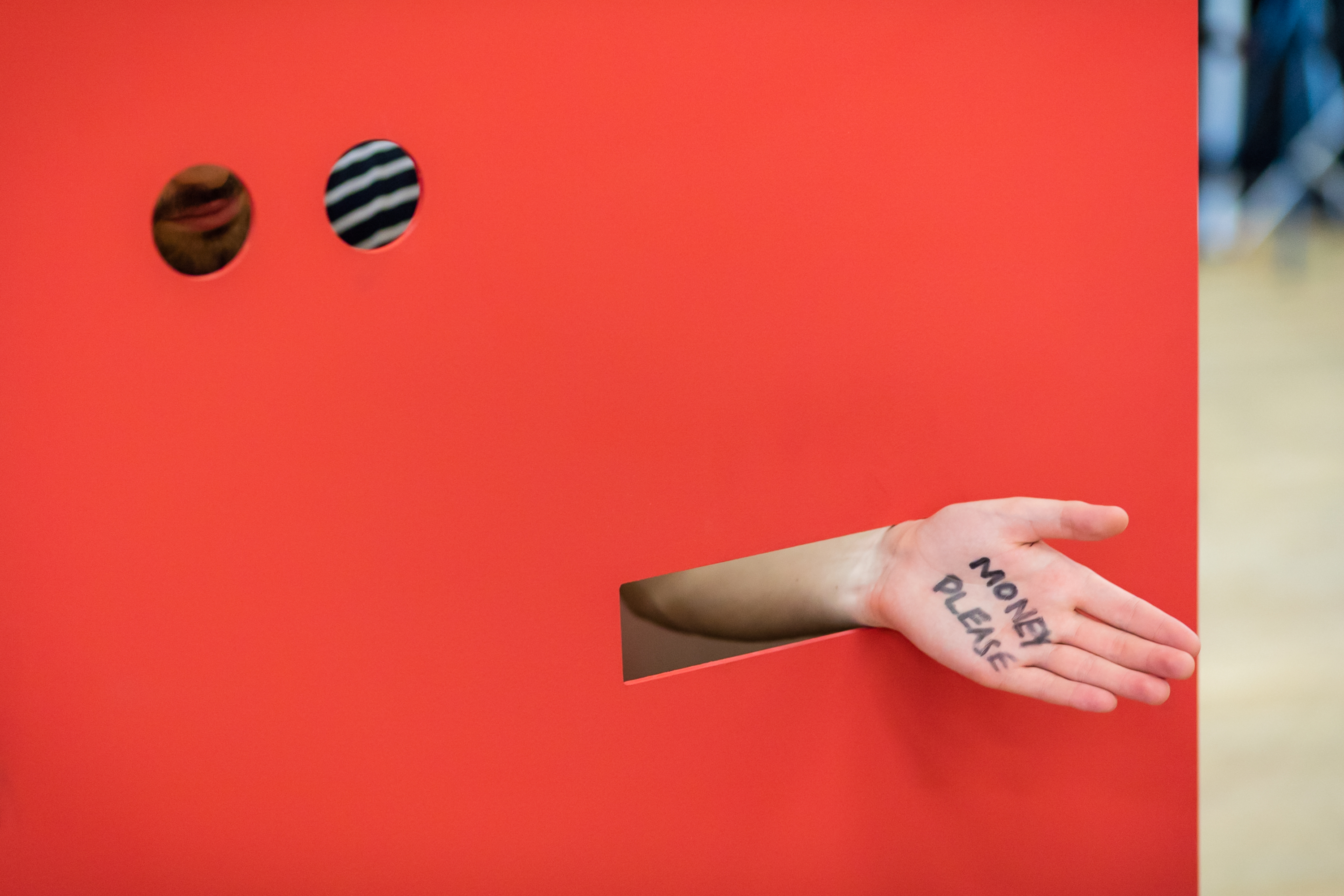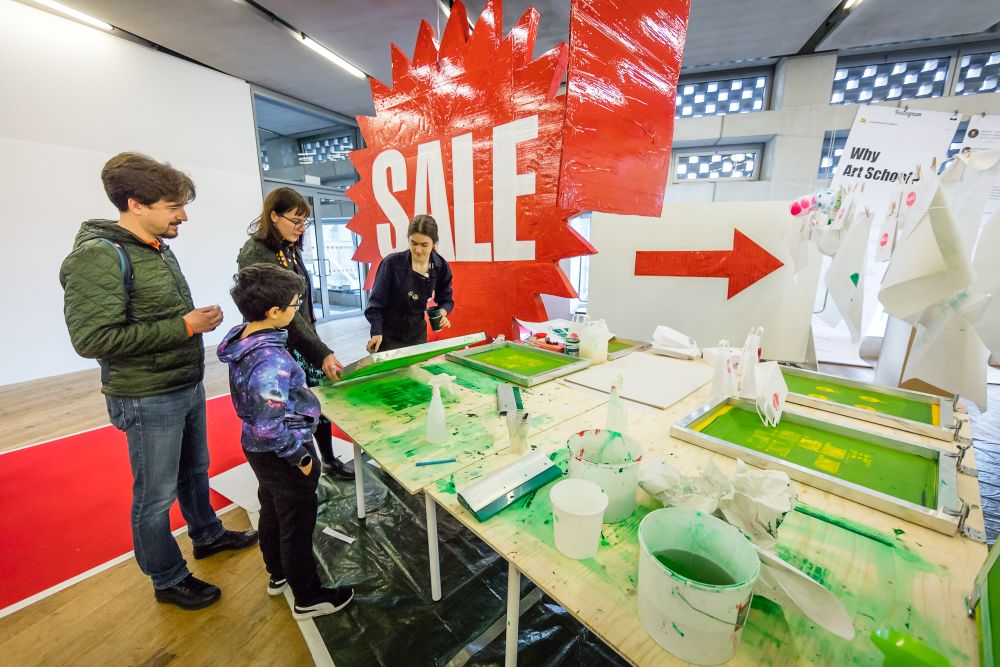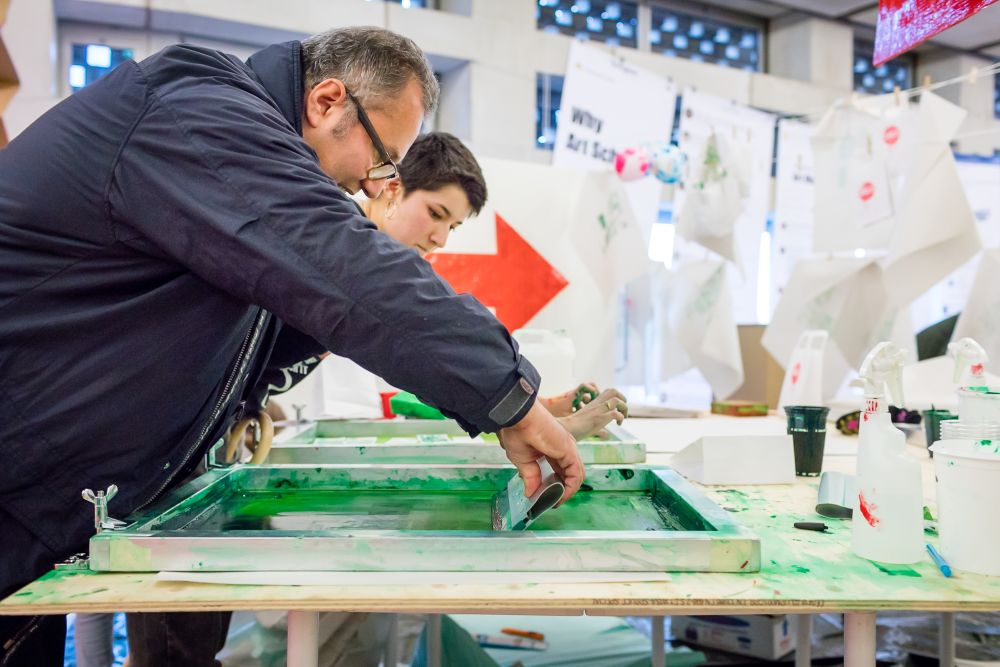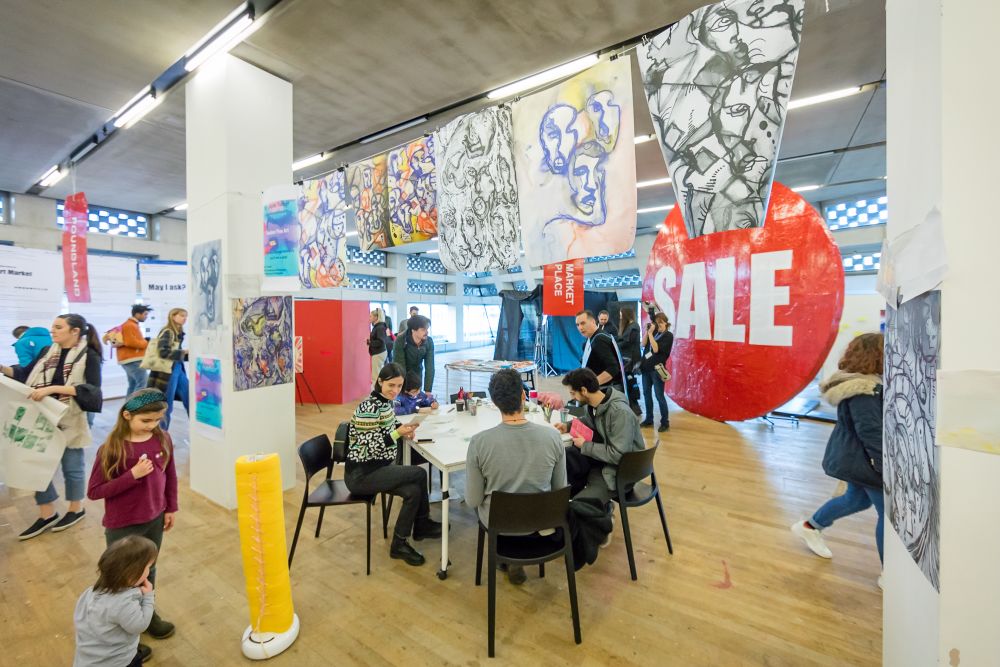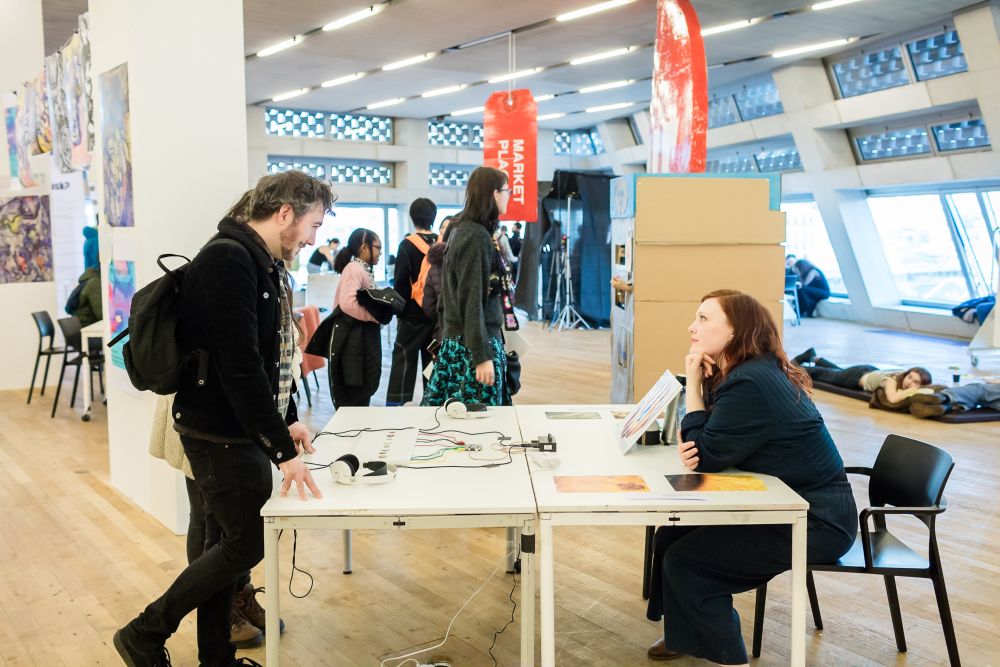This January, our Art programme students returned to Tate Modern for their annual residency at Tate Exchange. Building on the ambition of previous iterations, this year they created their very own independent, economic state – where visitors could make and spend billions.
This is the fourth year that staff and students have taken over Tate Exchange with a week-long programme of events. Previously, they have explored themes ranging from the artist studio to the relationship between art and politics. This year, SALE set out to consider the complexity and disparity of the art market by staging more than 300 “closing down sales”. Replicating and subverting systems of the commercial art world, our students presented a series of artworks, performances and provocations – all available for a fee.
The space was split into four zones: the Market Place, Poundland, the Department Store and the Auction House. Before visitors could shop they first needed to drop by the Counterfeit Mint. Here, they could print their own cash, officially entering them into our new financial system. New currency was created by screen-printing ten original designs onto newsprint – a production process they could return to as much as needed and as demand increased.
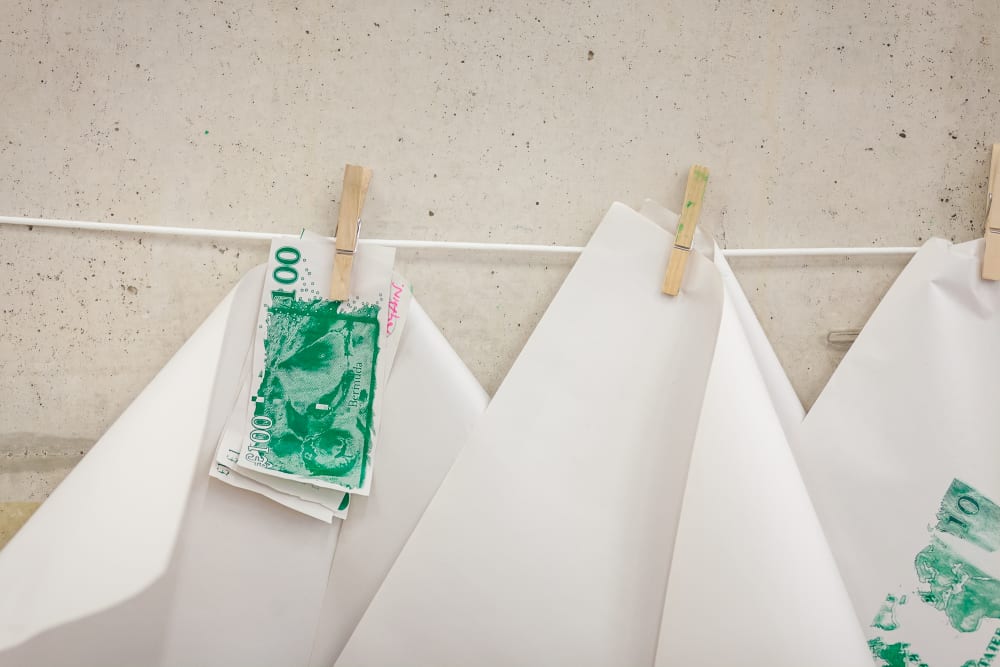
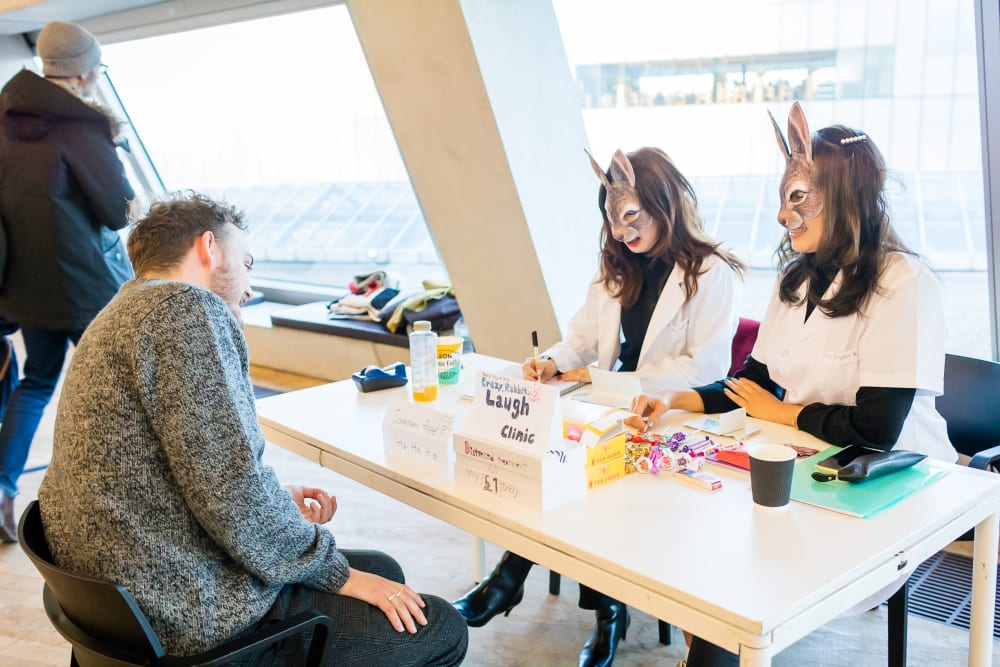
Across the week, there were hundreds of objects and products for sale – photographs, prints, quotes and seeds could all be purchased for a certain price. While some students set up shops to mirror the conventional transactions of the art market, others re-framed or parodied it. Students sold experiences and encounters – both pleasant and uncomfortable – such as conversations, dream interpretations, laughter and staring contests. MA Contemporary Photography students Laura Giesdorf and Abby Wright asked visitors to purchase negative space. Buyers were told to move in tandem with one of the students, creating space between two figures. A photograph was then taken, which was retained by the artists and put on the wall. The visitor, on the other hand, left empty handed having bought only the absent space their body had momentarily created.
Acts of turning financial power structures on their head continued throughout the week. BA Fine Art student Meg Ganonsky’s installation invited visitors to simply flush their money away, down the toilet. Another student installed a fountain, available for throwing money into in exchange for making a wish. One purpose-built vending machine offered wholly unpleasant fortunes in exchange for cash, while another was always broken and would never give you quite what you paid for. Notably, many students created interactions which were purposefully frustrating or fruitless for the consumer – not allowing them to purchase or receive what they had paid, or wanted to pay, for.
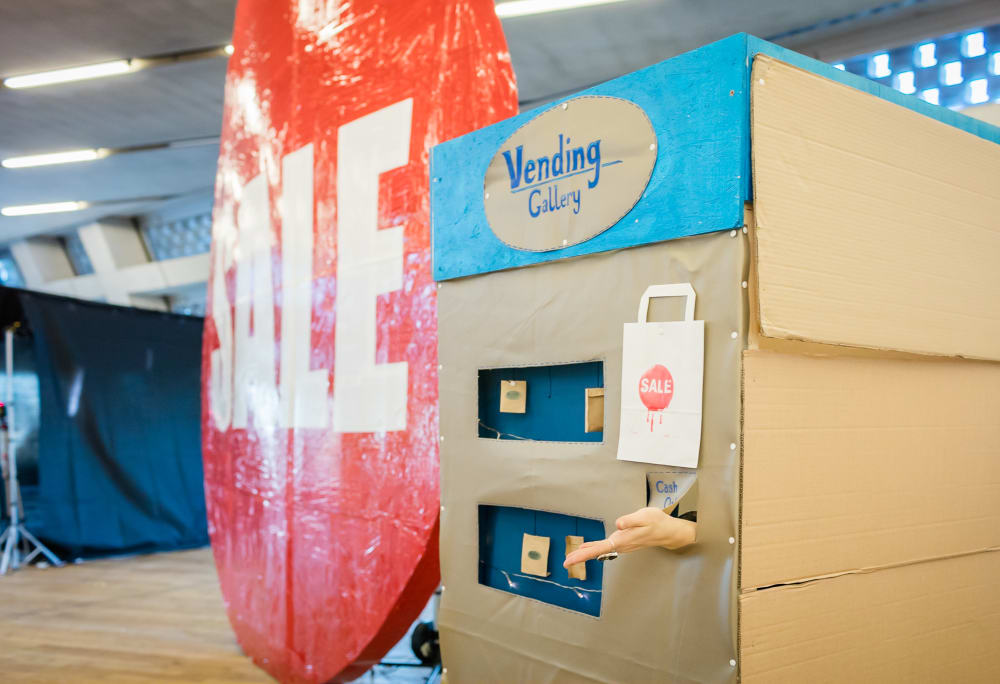
Students also tackled the relationship between money and data. Some sold your own data back to you, while in her installation Cyber Cinderella, BA Fine Art student Kirsty Sorley used technology to determine which high-heeled shoe represents you best. MA Fine Art students Elizabeth Tomlinson and Virginie Nugere set up their own bank. You could register for one of their white, silver or gold credit cards. All they requested in exchange was “all of your information” – provided by filling in a lengthy online form which covered basic personal details as well as your daily moods and deepest fears.
Speaking about the exploratory nature of this year’s theme, Art Programme Director Alex Schady said:
“SALE provided a brilliant strategy for visitor engagement – people could print their own money which would then translate into them spending it, and time, in the gallery space. It also gave our students great scope for exploring relationships between education, the professional art world and economic systems. They were able to critically and really playfully explore how money is made in the commercial art market and how it could perhaps be made differently.”
Throughout the week, there were also a number of instances of money being stolen – both by students and visitors. As Schady explains “The money really ended up having a value. When it was hanging up to dry after printing this didn’t surprise me, but people went to other people’s tables and took it from there, which did surprise me. It made me think that it wasn’t simply an impersonation of a currency. We had actually created a mini, working financial system for a brief period of time.”
